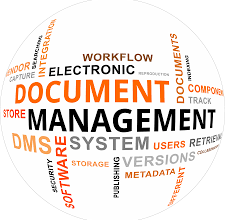Employee orientation is one of the ways to foster a healthy relationship between your new employees and the already existing ones, as well as their new environment. It gives your employees insight into what to expect and what is expected of them in the organization. We’ll show you how you can conduct a successful employee orientation with a checklist to guide you. First, let’s see a general overview of what a new employee orientation looks like.
What Is New Employee Orientation?
New employee orientation is the process of acquainting newly hired staff with their new environment. It offers employees the fundamental organizational information they need to feel prepared for their new team, department, and job within the company. Effective employee orientation informs employees of corporate standards and expectations, handles any paperwork, and addresses any questions or concerns they may have before starting their new jobs.
The goal of new employee orientation is to welcome new employees to the organization, explain critical policy and culture information, and acquaint them with their new workplace.
A predetermined plan and procedure for employee orientation will help relieve stress on managers and training professionals, allowing them to stay productive in their day-to-day duties while also getting a new employee started.
Why Is New Employee Orientation Important?
Orientation is significant since it marks the beginning of the employee-employer relationship. The first day of work is crucial because prospective employees want to confirm their decision to accept your offer of employment.
Both new employees and their new bosses and colleagues benefit from a smooth transition into a new role. A new employee can begin being productive soon if expectations and obligations are clearly communicated to them. A thorough and engaging orientation, as part of an efficient onboarding process, can also assist in reducing new employee attrition owing to misinterpreted or unmet expectations. A clear employee orientation policy will also ensure that all new team members receive the same training and information.
How Long Should New Employee Orientation Be?
The appropriate amount of time to spend on employee orientation varies per organization. Before new employees may fully participate in their tasks, different sectors require varying levels of training and briefing. However, the commonly accepted general benchmark for new employee orientation is three hours or no more than a full workday.
How to Create a New Employee Orientation Program
To create a new employee orientation program, follow these steps:
#1. Determine your orientation timetable.
Determine the timetable for activities and procedures while planning orientation. You may require different amounts of time depending on the size of your organization and the number of people in each orientation program. For some companies, a few hours of orientation is sufficient. If you’re guiding a larger group of new hires or covering more ground, you might want to extend your orientation to a few days.
#2. Make available appropriate orientation and access materials
Depending on where you do your orientation, you may need to provide your new hires with access to the building, such as a keycard or access code. Providing information such as a map, directions to buildings, and where to park might assist new team members in feeling more at ease during orientation. Documents, including information about what orientation entails and the timeframe, might assist new staff members in preparing for the day.
#3. Take a tour of the facilities and offices.
You can start your orientation with a tour of the buildings and other sites that employees may need to access. For example, you may start with a general tour of the office, which would include different departments, the cafeteria or dining rooms, break rooms, outdoor areas, and the lobby area. Describe the ideal entrance and exit doors, as well as emergency exits and procedures. You may also provide information about where to park as well as the location of the stairs and elevators.
#4. Plan a time to complete paperwork.
Completing the necessary paperwork is part of the onboarding process for new employees. Scheduling a time during orientation can ensure that all new hires understand the paperwork and are able to complete it before starting their position. It may also be advantageous for new hires to complete their paperwork with a human resources specialist present so that if they don’t understand something or require assistance, they may ask you.
#5. Involve current staff in orientation.
It is advantageous to include current employees in the orientation process. This could involve having team leads or managers lead specific aspects of orientation to demonstrate their leadership abilities and begin creating a relationship with the new team member. This may also entail introducing current employees to new staff members through participation in activities. You might also encourage a few staff employees to contact recent hires to welcome them to the organization and answer employee-specific inquiries.
#6. Coordinate team-building and orientation activities
If you plan your team-building activities ahead of time, you will have more time to gather supplies and organize each exercise. Consider pairing new team members together to introduce them to everyone else if you’re leading a large orientation. Consider giving conversation starters or creating games that encourage new recruits to collaborate and compete for prizes.
#7. Provide program and device training
Helping each team member install and use their technology can make their first day of work more effective. For example, you may teach them how to utilize their computer or a workplace program. Giving them their log-in details and information on how your company maintains its cybersecurity will help them protect their data and follow company technology policy.
#8. Plan your actions for after orientation.
Make a plan for what to do after a new hire has completed their orientation. You can add a meeting with the new team member scheduled by a supervisor or human resources expert in this plan. Retention rates can be increased by ensuring they are comfortable and succeeding at their jobs. Following orientation, you can schedule follow-up sessions two weeks, a month, and two months later. Different intervals may be more appropriate depending on the company and industry.
To better comprehend the new team member’s feelings, team leaders or human resources specialists can ask the following questions during these meetings:
- Do you believe you’ve been adequately prepared for your new role?
- Do you believe you have a good understanding of the company?
- What are your thoughts about your role in this organization?
- Are there any questions that have yet to be answered?
- Has your communication with your managers been fruitful?
- What future plans do you have for employee development?
- Was the job-related training you got beneficial?
- Was the training informative enough?
- Do you believe your training was worthwhile?
Preparing for a Successful New Employee Orientation
You can utilize the following suggestions to construct an effective and successful recent recruit orientation:
Create a welcome environment: You can create a pleasant environment by greeting new employees as soon as they enter the premises and giving them directions. Small gifts or welcome packets are also excellent ways to build a welcoming environment.
Give detailed information: When new team members don’t understand what’s going on or where to go, it might be confusing, so make sure to supply them with as much information as possible. Consider sending an email before orientation to inquire about any queries new staff members may have in order to better grasp the information they require.
Add coffee and food breaks: You can include breaks for drinks, coffee, and snacks, depending on the length of your orientation session. It may assist in keeping new employees motivated and give opportunities for spontaneous dialogue.
Read Also: ONBOARDING BEST PRACTICES: For Employees & Customers.
Assist employees in setting objectives: During orientation, you can use the time to assist new team members in setting performance and productivity goals. This can help them define a timeframe and monitor their progress against their initial goals.
Facilitate remote introductions: If you have a remote team, try encouraging your employees to introduce themselves to new hires. You can accomplish this by requesting each employee to contact new hires via email or an online workspace.
Create an employee orientation checklist: A checklist that covers each item you’d like to complete might help you plan and track your employee orientation objectives. Consider giving a copy to the new employee and keeping one for yourself to track their development.
Request feedback on orientation: You can obtain feedback on orientation by administering a survey or scheduling a meeting with new hires. New team members may suggest ways to improve the process.
What Is an Employee Orientation Checklist?
An employee orientation checklist describes an organized orientation process to ensure that each new employee receives a proper introduction to the organization, meets the right people, and has the necessary tools to become a productive employee soon. Here is a checklist to get you started on a new employee orientation:
#1. Explain the company’s mission, values, and policies
If your organization is adamant about providing outstanding customer service or is passionate about teamwork, the orientation program may ensure that this message is communicated to all new hires in a consistent manner.
- Culture
- Values
- Vision/Mission
- Policies
#2. Before the new employee’s first day on the job
- When and where should I arrive?
- Where should I park?
- To whom should I report?
- Inform other employees that a new employee is starting.
- Workstations, office supplies, and other equipment are ready.
- Computer and phone access are set up or planned.
#3. Orientation By Department and Job
- Describe your working hours/shifts.
- Paydays
- Grooming and attire
- Time off for vacation
- Illness leave
- Breaks
- Describe the training procedures and expectations.
- Describe the performance review.
- Employee Manual
#4. Greetings to your new employees
- Warm greetings
- Introduce the new hire to all critical personnel.
- Introduce the new hire to everyone with whom the new hire will be working throughout a shift.
- Show the “big picture” or how each position is related to the others on the team.
- Show how the team interacts with other departments or divisions of the business.
- If possible, the employee should meet with the owner, CEO, or another senior executive.
- Share your company’s vision, goal, values, and history.
- Assign a “buddy” to your new hire who can address simple procedural inquiries afterward.
#5. The Essentials
- Indicate the location of the restroom.
- Indicate the location of the lunchroom.
- Provide a brief tour of the facilities.
- Show your new hire were to keep personal items.
- Indicate the location of the break room or where to take breaks.
#6. Explain the policies and standards of the company
- Policy on smoking
- Discipline
- Theft
- Internet and phone use during business hours
- Absenteeism
- Bullying and harassment-free workplace
- Improvements and on-the-job training
- Practice during the day
- Personal usage of materials and equipment
- Job listings and promotions
- Collective bargaining
- Grievance procedures, both informal and formal
- Training
#7. Security, safety, and emergency procedures in the workplace
- How to Secure
- How to Request Assistance
- How to handle a dangerous employee or customer
- Fire safety techniques
- Personal safety precautions
- Accident reporting
- First-aid station/resources
- Plan of Health and Safety for COVID-19
- COVID-19 Health and Safety Protocols, Policies, and Procedures
- Personal safety equipment
#8. Finish all paperwork
- Encourage prospective hires to enroll in the company’s benefit plans.
- Have the new employee fill out all payroll forms.
- Explain when, how, and for what they are compensated.
If the new employee is represented by a union, there is generally a component of the training in which the union representative explains the requirements and benefits of union membership.
#9. Establish job and company expectations
- Probationary phase and performance evaluation period
- Examine the job description, highlighting what is anticipated in terms of:
- Major roles and duties
- Performance criteria
- Hours
- Staff gatherings
- Workload
- Training
Pay special emphasis while communicating your customer service concept.
#10. Get the employee orientation started
Provide preliminary instruction on the first day, whether it’s how to use the cash register or how to manage phone calls.
Explain that you will provide continued training in the coming days, whether it is one-on-one mentoring or attending a training session.
What makes a successful orientation?
It is important for employees to feel comfortable asking questions and offering suggestions during the orientation process. In most cases, this type of input aids the company in solving the issues being experienced by the staff. With this information in hand, a company can make structural changes where they are needed.
What are the three stages of orientation?
When it comes to employee orientation can be graded into three categories, and they include:
- Pre-Orientation.
- Job-Site Orientation and.
- Job-Specific Orientation.
Who is responsible for new employee orientation?
The hiring manager is responsible for coordinating and carrying out all aspects of the new hire’s onboarding process. The hiring manager’s participation and initiative throughout the process of the new hire settling in successfully are crucial to the latter’s satisfaction with their new job.
How long should a orientation last?
Onboarding is often confused with employee orientation, but the two are actually quite distinct. A typical orientation program lasts between two and five days. It’s the process of mentally, emotionally, and legally integrating a new employee into an organization.
What to expect during orientation?
Job orientation typically consists of a company presentation, meeting new coworkers and teams, learning about company policies and procedures, and more. The new hire will also be required to sign various employment documents at this time, including those pertaining to taxes and payroll.
How do you start an orientation?
To kick things off, please introduce yourself and briefly describe your role as one of the company’s key leaders. Each leader should prepare a short speech to give to the orientation attendees. Post a diagram in the front of the room that outlines the structure of your business. Add pictures of the team members next to their names.
Do you start your job right after orientation?
The orientation could happen before you even start working, or it could occupy the first few weeks of your employment. Before you leave, make sure you’ve done everything necessary to get off to a good start at your new job.
In Conclusion,
Conducting new employee orientation helps your new employees to get acquainted with their new environment. The above checklist will gear you toward conducting a good employee orientation program.
Frequently Asked Questions
What are the three types of employee orientation?
The three types of employee orientation are traditional orientation, interactive orientation, and reorientation.
What is the purpose of new employee orientation?
The purpose of new employee orientation is to make the new employee feel welcome, integrated into the company, and capable of performing the new position successfully as soon as feasible.
What is a good orientation program?
A good orientation program is one that allows employees to ask questions and provide feedback about how they feel about their jobs.
Related Articles
- The Evolution of Marketing (Explained)
- Real Estate Business Cards: Best Ideas, Templates, Samples & Quotes to Close deals Faster
- Service Marketing: A Comprehensive Guide (+ Practical Examples)
- SALON BUSINESS CARDS: Catchy Templates and Ideas to inspire you (+ quick tools)
- Photography Business Cards: Free Templates, Samples, Ideas, Tools (+ Quick Guide)
- STAY INTERVIEWS: Tips for Conducting Stay Interviews (+Example questions)
- PRE EMPLOYMENT DRUG TEST: What Happens If You Fail? (Easy Guide)






